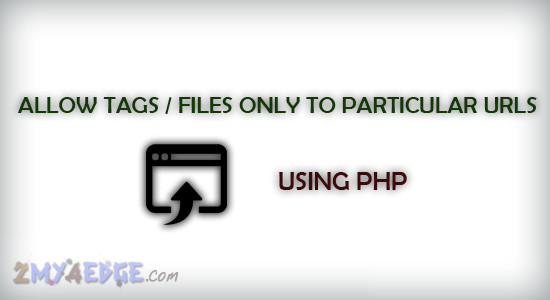We are mostly using header and footer as separate page. so that time when we are adding one in header or footer file it will affect all the files that, so for we have to take that files only to the particular url, then only it will works well. we can add css, javascript and jquery to particular page. so her we have only solution for that. simple php code will help you to do this. lets see the code.

<?php echo $_SERVER['SERVER_NAME']; ?>
The above code Output is like
www.something.com
i run this code in my demos site so my output will be like
demos.2my4edge.com
To know the current requsting URL
<?php echo $_SERVER['REQUEST_URI']; ?>
It will show the current requesting page. if you are running this code in demos.2my4edge.com/url/url.php means the output will be like.
/url/url.php
Consider There are 3 files.
index.php
main.php
url.php
INDEX.PHP
<?php
$currenturl = $_SERVER['SERVER_NAME'] . $_SERVER['REQUEST_URI'];
if($currenturl == 'demos.2my4edge.com/url/' ||
$currenturl == 'demos.2my4edge.com/url/main.php' ||
$currenturl == 'demos.2my4edge.com/url/index.php' )
{
echo '<p> Welcome main pages <p>';
echo '<title>Welcome page</title>';
}
else
{
echo '<p> Inner page </p>';
echo '<title>Inner page</title>';
}
?>
MAIN.PHP
<?php include('index.php'); ?>
URL.PHP
<?php include('index.php'); ?>
so the above INDEX.PHP code runs in all the page.
$currenturl = $_SERVER['SERVER_NAME'] . $_SERVER['REQUEST_URI'];
is getting the current url by the concatenation operator of both SERVER_NAME and REQUEST_URI. We are checking that by using if(condition). if the url path is correct it will run. like the above index.php file code you can give if condition as you need.
NOTE : Don't use HTTP:// or HTTPS:// it wont accept. i hope this is really helpful to you.
RELATED POST :
Basic of php and mysql ( insert coding )
Detect operating system and browser using Php
Comment system using php and MYSQL
live availability Check using php and Ajax
File download coding using PHP and MySql
Insert and view data without refresh using PHP, MySql and AJAX
Basic insert, view, edit, delete and update using PHP and Mysql
Add / SUM the table row values in database using PHP

Great blog post. Very informative for developers. Looking for more posts like this!
ReplyDeleteGreat post.
ReplyDeleteQuite handy information for PHP developers. This can be a very helpful for PHP developers for improving their knowledge and also for improving their work performance. Keep sharing like this.
ReplyDelete